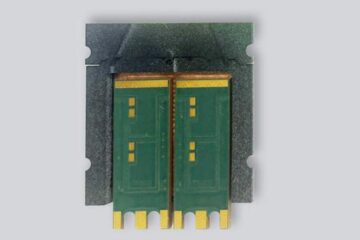HIV skips shrinking rafts

Raft of changes: cholesterol may be involved in HIV replication. <br>© SPL <br>
Cholesterol capping limits HIV replication.
Cholesterol-lowering drugs inhibit HIV replication in cells, new research shows1. Experts doubt the drugs will become the next AIDS therapy, but the finding hints at an important role for cholesterol-rich regions in HIV infection.
Statins, widely prescribed to avert artery clogging, shrink cholesterol ’rafts’ in HIV-infected human cells, Eric Freed and Akira Ono at the National Institute of Allergy and Infectious Diseases in Bethesda, Maryland find. In the duo’s test-tube experiments, at least, this shrinkage forces the virus to jump off.
The drugs „markedly and specifically,“ limit the virus’ ability to copy itself, says Freed. „Virus that does form is less infectious,“ he adds. Although cautious about using statins, or similar drugs, as AIDS therapies, Freed thinks it’s a possibility worth investigating.
„The concept is great,“ says Marilyn Resh, at Memorial Sloan Kettering Cancer Center in New York – one of the first to demonstrate the link between rafts and HIV replication. But, she warns, the doses required to reproduce the effects seen in the test tube would probably be toxic.
What’s more, rafts are involved in many essential cell activities. Floating in the semi-fluid cell membrane like blobs of grease in a washing-up bowl, rafts help cells to communicate, maintain their shape and organise their surface proteins.
„If you just go in and bomb the rafts,“ says Resh, these functions would almost certainly be harmed.
Eric Hunter, who studies HIV replication at the University of Alabama in Birmingham agrees. But he points out that HIV-positive patients are often given statins to counteract the side-effects of some HIV drugs. „It would certainly be worth looking at [HIV-postitive] patients under statin treatment,“ he says.
Raft building
Rafts are a new and important area of HIV research. They provide a unique insight into how the virus copies itself. „There are so many aspects of how [HIV] assembles itself that we don’t understand,“ says Resh.
„Rafts have piqued the interest of a broad range of researchers,“ says Hunter. He cautions that the link to HIV replication may be more fundamental, relying simply on cholesterol.
Rafts come together when cells join to communicate – notably immune system T-cells that are targeted by HIV. So Freed’s team is investigating whether they are involved in the spread of virus as well. „They could facilitate the transmission of virus from one cell to another,“ says Freed.
References
- Ono, A. & Freed, E. O.. Plasma membrane rafts play a critical role in HIV-1 assembly and release. Proceedings of the National Academy of Sciences, 98, 13925 – 13930, (2001).
Media Contact
Weitere Informationen:
http://www.nature.com/nsu/011122/011122-8.htmlAlle Nachrichten aus der Kategorie: Medizin Gesundheit
Dieser Fachbereich fasst die Vielzahl der medizinischen Fachrichtungen aus dem Bereich der Humanmedizin zusammen.
Unter anderem finden Sie hier Berichte aus den Teilbereichen: Anästhesiologie, Anatomie, Chirurgie, Humangenetik, Hygiene und Umweltmedizin, Innere Medizin, Neurologie, Pharmakologie, Physiologie, Urologie oder Zahnmedizin.
Neueste Beiträge

Anlagenkonzepte für die Fertigung von Bipolarplatten, MEAs und Drucktanks
Grüner Wasserstoff zählt zu den Energieträgern der Zukunft. Um ihn in großen Mengen zu erzeugen, zu speichern und wieder in elektrische Energie zu wandeln, bedarf es effizienter und skalierbarer Fertigungsprozesse…

Ausfallsichere Dehnungssensoren ohne Stromverbrauch
Um die Sicherheit von Brücken, Kränen, Pipelines, Windrädern und vielem mehr zu überwachen, werden Dehnungssensoren benötigt. Eine grundlegend neue Technologie dafür haben Wissenschaftlerinnen und Wissenschaftler aus Bochum und Paderborn entwickelt….

Dauerlastfähige Wechselrichter
… ermöglichen deutliche Leistungssteigerung elektrischer Antriebe. Überhitzende Komponenten limitieren die Leistungsfähigkeit von Antriebssträngen bei Elektrofahrzeugen erheblich. Wechselrichtern fällt dabei eine große thermische Last zu, weshalb sie unter hohem Energieaufwand aktiv…





















